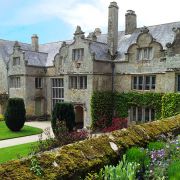Botallack Mine & the Crowns Engine Houses
Used in the filming of the BBC's Poldark series as the family's mining interests of Wheal Leisure and Grambler, Botallack Mine has become some of Cornwall's most iconic industrial heritage. Owned by the National Trust, its overground structures, including the cliff edge Crowns engine houses are grade II listed. They also form a constituent part of the South West Coast Path, the Aire Point to Carrick Du Site of Special Scientific Interest, and the Cornwall and West Devon Mining Landscape UNESCO World Heritage Site.
Located on the north coast of Penwith between the town of St Just and the village of Pendeen, Botallack Mine now lies in ruins. Enhancing the landscape of meadow-covered cliffs and sweeping sea views, during its heyday in the late 1800s the mine managed to produce 20,000 tonnes of copper, 15,000 tonnes of tin and 1500 tonnes of arsenic (a sought-after element for everything from wallpaper to sheep dip) as well as an estimated 1.5 million tonnes of waste material. Up to 500 men, women, and children would be working within the mine's various shafts at any one time.
To produce this much metal, its mine shafts were extended deep beneath the sea, measuring up to half a mile long and located several hundred metres below the seabed. While the site's mining pedigree hit its zenith during the Victorian era, records of mining activity go right back to the 1500s, with some even suggesting that Cornwall's prehistoric Bronze Age populations may have been the first to take advantage of this natural bounty.
To enable the shafts at Botallack mine to run so far out and below the sea required some formidable pumping power was required to keep the water out. This took the form of twin engine houses sat at the foot of the cliffs, just above the entrance to the diagonal main shaft. Built in 1815, the Crowns engine houses are now possibly the best known in all of Cornwall with their unrivalled and dramatic location.
One of the most fascinating features of the site are the arsenic labyrinths. This series of snaking chambers are great to explore, although their use is not immediately obvious. If viewed as a whole you may notice the labyrinth sits at the heart of a series of tunnels which lead from a large oven-like calciner to a tall chimney at the other end of the complex. Tin ore would have been baked in the calciner with the fumes drawn through the chambers and up out of the chimney. En route the fumes would deposit the toxic arsenic in the chambers which were sealed off with iron doors. It would then be some unfortunate's job to collect the cooled residue from the walls of the chambers wearing safety equipment such as cotton nose plugs and a handkerchief to breathe through!
By the reign of Queen Victoria, the tin from the mine was selling for the modern equivalent of £5,500 per tonne, by which time the mine had made such a name for itself that it received an official visit from the Prince and Princess of Wales, the future King Edward VII and Queen Alexandra. Other celebrities of the time to visit included Wilkie Collins, author of The Woman in White and The Moonstone, the first modern piece of detective fiction.
However, competition from abroad together with a fall in demand for tin eventually lead to the closure of the mine in the late 1890s, leaving approximately 25 shafts bereft of work for the first time in decades. It reopened again briefly at the turn of the new century, although this resurgence of interest didn't last long, meaning its shafts have remained dormant now for more than a hundred years. Without upkeep, its buildings, began to fall into disrepair, before being rescued from oblivion by the National Trust.
On the clearest of days visitors gingerly taking the footpaths down to the Crowns engine houses are able to see the Scilly Isles some 26 miles away. Only the upper building is reachable however, with stormy seas lapping at the foundations of the lower structure. Built to contain pumps to remove water from the leaking shafts, they were vital to the operation of the mine.
Nearby, the count house workshop, which was once the stables for the ponies that worked on the site, now contains a National Trust cafe and small museum. Detailing much of Botallack's history through its display of objects and imagery, this helps give the site some context and bring it to life.









